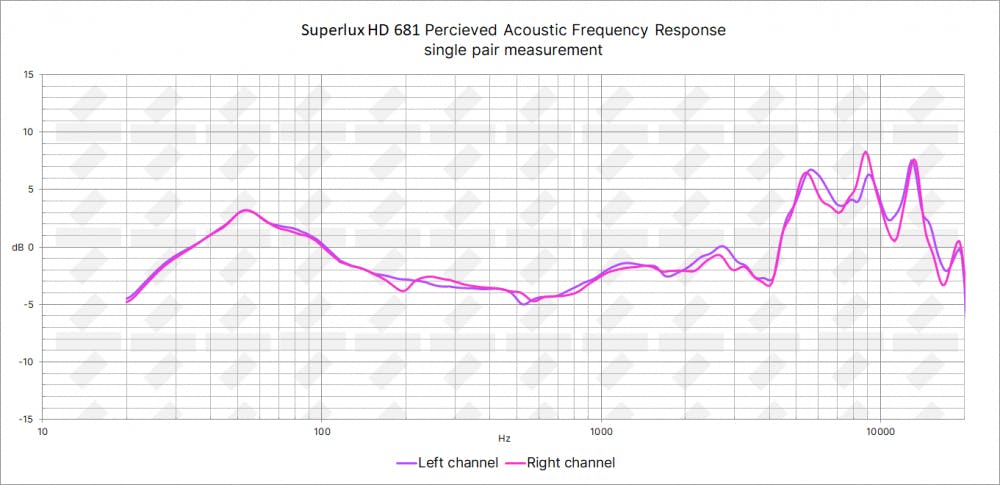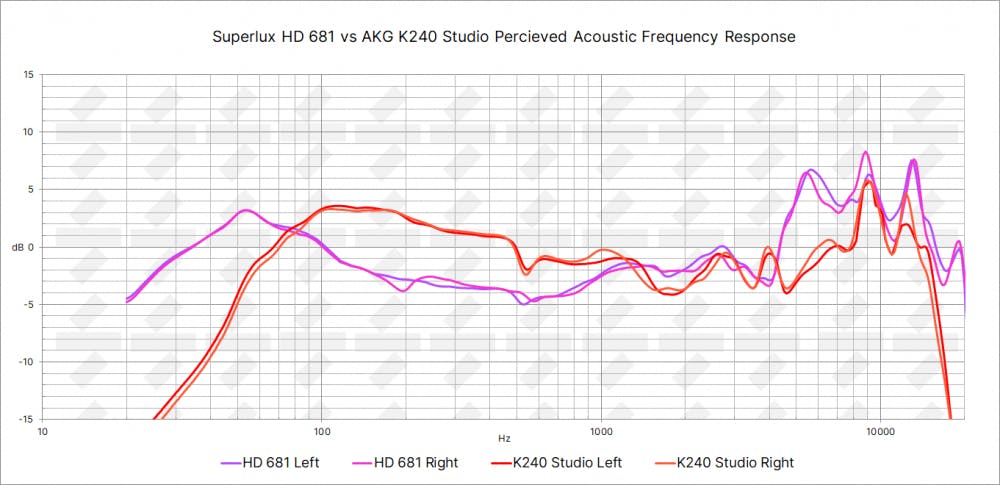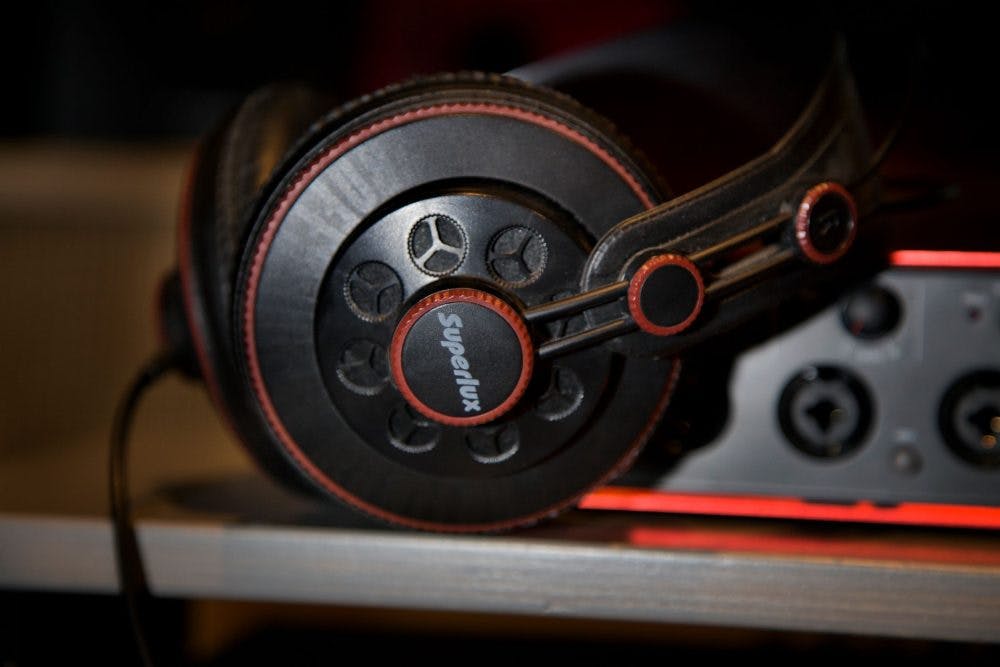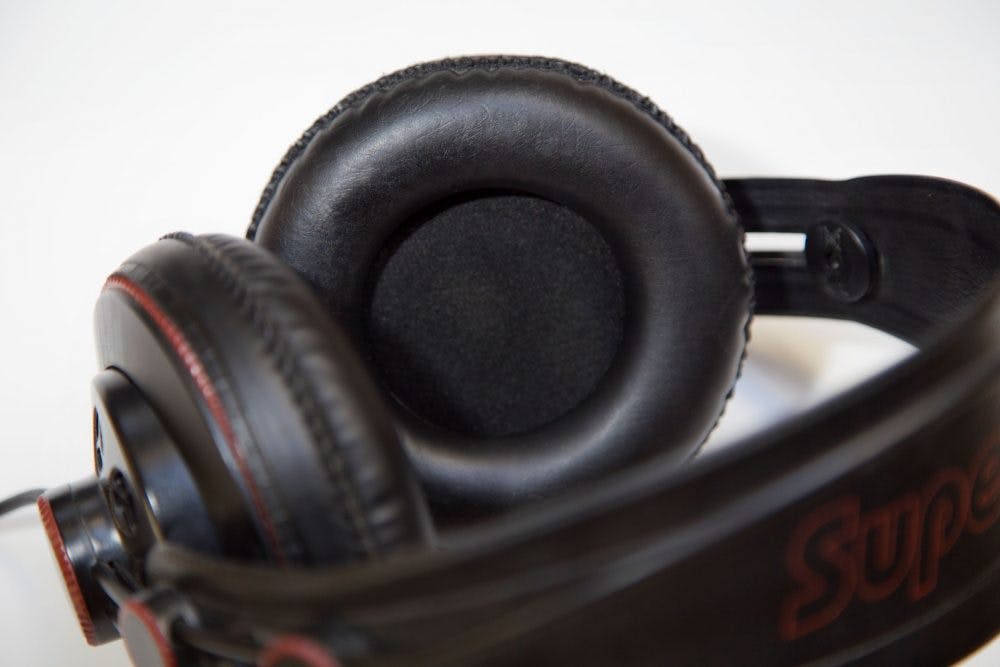There’s no getting around the fact that Superlux HD 681 design is a shameless copy of the classic AKG K240 Studio. Superlux isn’t the only company doing this, but their offering comes at the lowest price of them all – an astounding €20. It’s easy to dismiss such cheap headphones as a joke, not suitable for any serious studio use, but they’re surprisingly capable headphones. In some aspects, they even beat the headphones that they’re copying. Perhaps they’re worth consideration after all?
- As affordable as it gets
- Relatively workable frequency response out of the box
- Good THD performance
Pros list with SoundID Reference calibration
- Neutral frequency response
- Varied frequency response between pairs
- Not the greatest comfort
- No detachable cable
HD 681s are easy to drive headphones and the SoundID Reference calibration doesn’t require taking away much volume in order to maintain safe headroom. That means that they’re plenty loud when plugged in straight into a laptop, even when used with calibration.
Yes, the design has been copied from AKG, however, it doesn’t mean that the build quality also matches AKG. Nearly every part feels cheaper and the cable is integrated, not user detachable.
It comes as no surprise that everything apart from the metal headband bow is made of plastic. Yet at this price point, it all can be forgiven.
Sound is the area where HD681 differs from the AKG original the most. When compared to AKG K240 Studio, it’s a tradeoff. You get quite balanced, not overly emphasized bass with way better sub bass extension, however, the high frequency boost is more pronounced and harsh. For this price though, it’s hard to complain – HD 681s are easier to work with than some headphones that are several times more expensive. Furthermore, it’s borderline unbelievable how impressive and revealing they sound after individual calibration treatment. Too bad that there won’t be many people sending these in for individual calibration since €150 service for €30 headphones seems quite ridiculous, yet when it comes to accuracy, no €200 headphones can match individually calibrated HD 681. The main drawback of the idea of individually calibrating HD 681 is the fact that the cable is non-detachable, and when it fails, you’ll need to solder a new one.
Surprisingly the vast majority of the measured pairs don’t have significant channel balance issues. Few pairs have low-end skewed to one side, few have unbalanced highs, but most of the time the discrepancies stay within 2dB. However, there’re also pairs with a 5dB difference between channels in the sub bass. It comes down to luck if the channels of your pair will be evenly matched, but your odds are not as bad as the price might suggest.
AKG K240s are very comfortable, maybe even the most comfortable headphones below €100, so are HD 681s the same? Not really, but the difference isn’t massive. The main distinction lies with the earpads that may look nearly identical, but are less plush on HD 681 and if your ears are prone to sweating when using headphones, things can get sweaty pretty fast. Also the headband is a bit stiffer, but it’s not that big of a deal. Most of our testers still found them to be comfy enough.
Another drawback that’s not present on K240s is the annoying noise. Sometimes if you touch them or move your head, it will trigger many different crackling noises to emit from the earcups and the headband “hammock” mechanism.
Yes, they have their shortcomings, but at the extremely affordable price of €20 / $35, it’s hard to be picky. The sound really isn’t bad, and for most, they’ll be comfortable enough. For such a low price, it wouldn’t be sane to ask for anything more. In this price range, the only other headphones that we’ve measured and that are worth considering, are Monoprice 8323s, but Superlux HD 681s are better sounding and more comfortable.
THD performance of the HD 681s puts to shame some headphones that cost a dozen times more, including the headphones that they mimic, AKG K240 Studio. The harmonic distortion increase in the low end is nothing to worry about, and while the peak at about 4kHz looks troubling, it wasn’t audible in listening tests. Overall THD is no issue for HD 681 and that is quite amazing for such affordable headphones.
How accurate and consistent is the correction effect among different listeners?For the most part HD 681’s perform well at delivering consistent frequency response to a wide variety of listeners. There may be some issues in the high mid range and in rare cases in the very top end and sub bass.
How much do they differ pair to pair in terms of frequency response?This is where Superlux leaves a lot to be desired. Among the pairs we measured, the sub bass varies +/- 5dB and even more than that in the top end above 10kHz. Since these headphones may vary so much from pair to pair, the average calibration profile that’s bundled with SoundID Reference can’t be as accurate as with other, more consistent headphones. So when working with HD 681 and the model average calibration, keep in mind that bass and treble may not translate as well. Nevertheless, this can be avoided at least to some extent by using reference tracks.
Rating
Conclusion
While the ethics of the Superlux HD 681 is questionable, the value proposition is not – they’re an amazing deal. They sound relatively good on their own, but really become alive after individual calibration. Sadly, it’s clear that there will be much more people using them with model average calibration profile, and its accuracy may be not as good as with more expensive models due to the lack of manufacturing consistency leading to varied frequency response between pairs. But for some production tasks they might be accurate enough even with the average profile. For €20 headphones, that’s fascinating.
Final Rating
Calibration Enabled
Calibration











